You can grow Roses from seeds, but growing Roses from cuttings are the easiest way to reproduce your favorite varieties. There are several practical reasons to propagate Roses from cutting. If you have a type that works particularly well in your garden, rooting some cuttings from this Rose provides a cheap way to grow your collection. Overall, growing Roses from cuttings is an easy process. Under the right conditions, the changes stimulate it to grow roots. The resulting plant is similar to the parent.
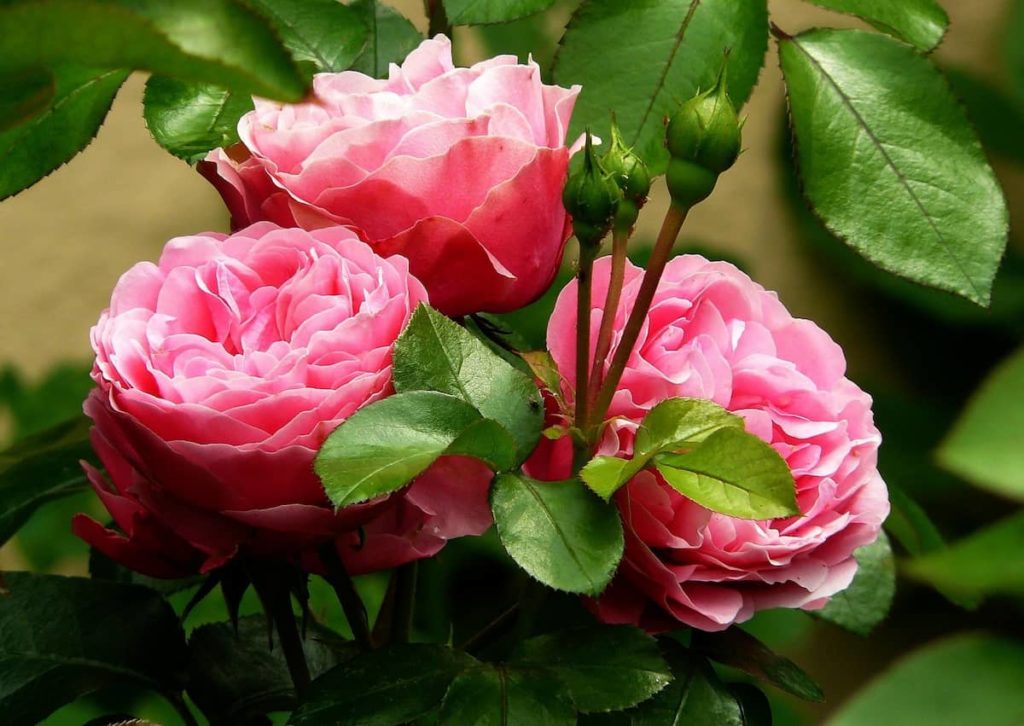
How to grow Rose plants from cuttings to harvest
How long does it take Roses to grow from cuttings?
- Softwood Rose cuttings will be rooted within 10 to 14 days. To test their growth, tug very gently on the cuttings. You will feel slight resistance when new roots form and grow in the soil. Give your rooted Rose cutting 9 to 12 months to grow enough to plant in your garden.
- So as soon as the eye and canes begin to sprout or develop at the top, you’ll know they’re rooting. In cases where you can’t differentiate new growth, pull the cutting, and if you feel resistance, you’ll know the cutting is rooting. Many modern Roses will only live for six to 10 years unless exceptional care is taken. Some species and climbing Roses will live more than 50 years.
Growing Roses from cuttings
- Most Rose varieties grow easily from a stem cutting, which allows you to grow your garden with minimal out-of-pocket costs. Cutting from a healthy, productive stem can create its root system and rapidly grow into a new flowering bush.
- Despite their reputation, most Roses are grown and easy to propagate at home. You should cut at a 45-degree angle, just above the first set of leaves at the top and again above the last set of leaves at the bottom of the stem. Remove all flower buds and leaves except a set of leaves at the top of each cutting. You should dip the bottom half of the cutting into the rooting hormone powder or gel. Use a pencil to make a planting hole 3 to 4 inches deep in your rooting mix. Plant the Rose cutting in the hole and cover at least two nodes.
- You should fill a small pot with at least 6 inches of the potting mix made specifically for Roses. Make a hole in the potting medium, then insert the stem sliced-side down, taking care not to rub off the rooting hormone. Slowly pack the soil around the stem and water.
Is it better to root Rose cuttings in water or soil?
- Rose cuttings can be rooted in water. To do this, choose a healthy stem from the current year’s growth at the end of spring and cut a 15-centimeter section under a bud. Remove all leaves except just the top two.
- Starting Rose cutting into the soil is more reliable, as it causes less shock to the plant when you transplant it. This method also encourages the growth of hard, strong roots. But it’s incredibly easy to start in the water. Always use fast, clean pruners to take cuttings. The planting site for Roses growing from cuttings should be one where they will get good exposure to the morning sun but will be protected from the hot afternoon sun. The soil in the planting place should be well plowed, loose soil, with good drainage.
- Rose cuttings usually take three or four weeks to root in water but don’t give up if you don’t see the roots so quickly. Some cuttings will root, but the success rate is usually around 20%, while you can achieve 80% success by propagating Rose cutting or layering in the soil medium. Rose cuttings take a long time to root in water, and there is a risk of rotting.
In case you missed it: How to Grow Rose Flowers at Home in the USA: From Seeds, Cuttings, Faster, In the Backyard, Indoors, and Containers
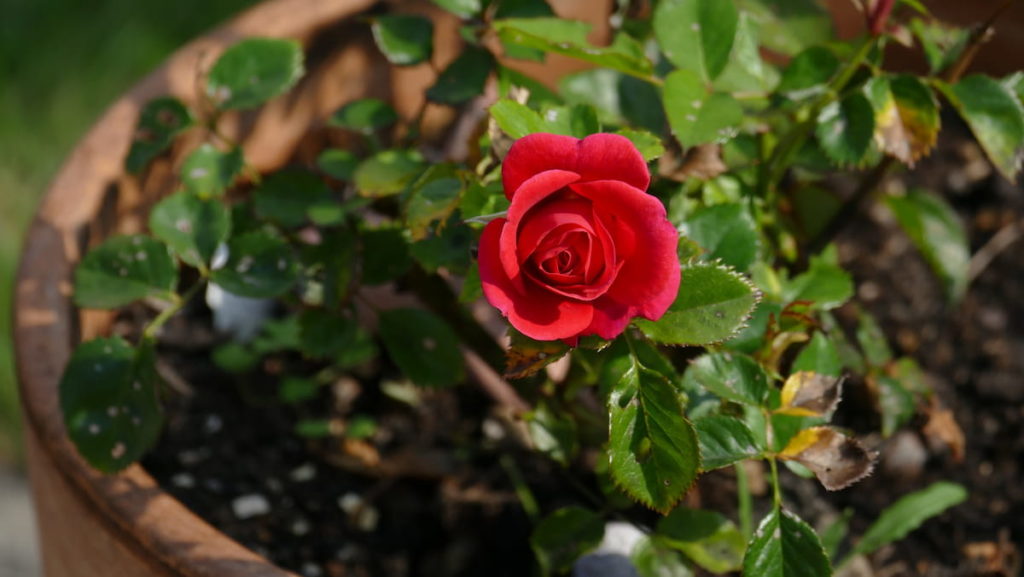
Growing Rose cutting in Potatoes
- You can grow a Rose bush from a Rose cutting by planting cuttings in Potatoes. The naturally moist Potato keeps the cuttings moist while it sprouts the roots. You should cut each stem at a 45-degree angle, then immediately dip the chopped end into honey or rooting hormone and dip it in a firm, moist Potato that has been scored.
- You drill a hole in the Potato and slip a section of the stem from the Rose bush into the hole. Now plant the Potatoes to the ground about 4 inches deep. Then water well and cover with an inverted bottle to maintain high humidity. After a few weeks, your little Rose bush will root well.
How do you root a Rose cutting with honey?
- You can use honey for any cutting that includes softwood, greenwood, and hardwood cuttings. Even succulent cuttings also benefit from honey. You should dip the cutting end into undiluted honey and rotate it to form a thin layer around it. After dipping, you can plant it in the growing medium.
Growing Roses indoors
- Miniature Roses need a bit of direct sunlight indoors to thrive. Most Rose plants can be grown in a sunny corner or window area, but several species work well with artificial light.
- Most will bloom indoors for a week or two, although they will need to be planted outdoors to get the sun and other growing conditions they’ve needed for a long time.
- You should provide at least 1 inch of water per week, this could mean water daily, every other day, or even twice a week. Make sure to water deeply to promote good root growth and avoid spraying delicate blooms directly.
Do Rose cuttings need sunlight?
- Roses prefer a sunny location, but it’s usually better that they are shielded from the hot afternoon sun for root purposes. Roses thrive in direct sunlight. However, Roses can still perform well even when planted against the north wall (which means no direct sunlight).
- Although Roses like six hours of sun daily, it doesn’t matter what part of the day those six hours come from. Six hours of the morning sun is better than six hours of the afternoon sun. You can also expect fewer blooms if your Roses don’t get enough sun.
- Most Roses thrive in the sun. However, some grow surprisingly well in shaded areas unless the shade is caused by trees, which take a lot of moisture from the soil. You should choose a place with bright but indirect light in the garden, so the cutting will not be stressed by too much sun or heat.
Soil requirement for growing Roses from cuttings
- Roses are adaptable and can be grown in almost any soil type because they are well-drained, deep, and filled with Humus. Roses like heavy soil, so a loam-based compost is ideal. Roses require plenty of food and water for healthy growth and flowers.
- Roses prefer well-drained soil. Their long tap root system needs deep soil. Whatever growth they have above the ground will be almost mirrored below the soil in root growth. Fortunately, Roses prefer soil pH near normal levels for ordinary garden soil, which is slightly acidic to neutral (6.0 to 7.0). Before planting, it’s easy to modify the soil if your soil is out of this pH range.
- When making a new Rose bed, add 2 to 4 inches of organic matter to the area before plowing. This will help improve the soil condition of your Rose. Typically, you can add one part of compost, prepared planting mixture, or aged manure to two parts of your garden soil.
- Loam is one of the best soils for growing Rose bushes. Since this soil contains all four key elements and 50% air, it is the best soil choice for Rose bushes. The loam also contains 46% of inorganic materials such as sand, clay, and silt and 4 to 6% of organic materials.
In case you missed it: Rose Plant Growing Tips, Ideas, Techniques, Secrets
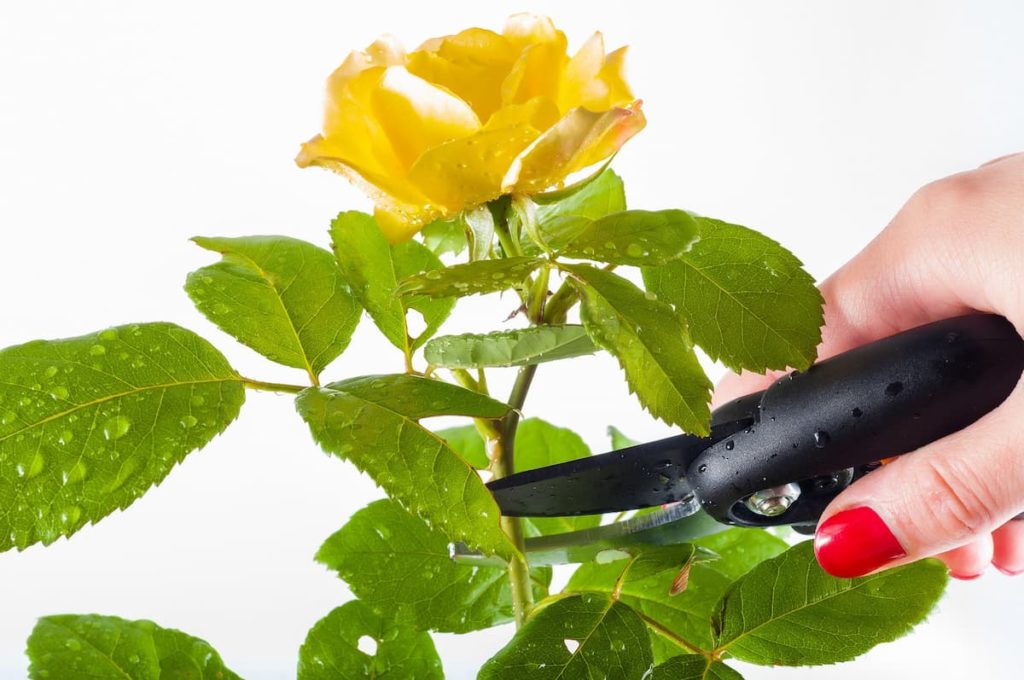
Why do Rose leaves go yellow?
- Rose leaves turn yellow because the soil pH is too high or the soil doesn’t contain enough iron. Yellow leaves are also caused by a lack of oxygen when plants are overwatered or the soil does not drain easily. You can see that the leaf veins turn yellow while the leaves are still green.
- Use a moisture meter before watering to see if water is necessary or if it can wait another two or three days. You should water your Roses either early in the morning or after the temperature starts cooling off. Rinse the bushes with good, clean water after a warm day.
Growing Roses in pots from cuttings
- You can grow Roses well in containers as long as the root space is adequate and maintenance is appropriate. Containers at least 2 to 2.5 feet deep and at least 15 to 20 inches in diameter are recommended for full-size Rose types and are generally better for Rose health, growth, and blooming. Fill a small pot or container with about 6 inches of Rose potting soil and make a small hole in the center. Insert the stem into the hole and take care.
- If you have plenty of sun and container, you can grow beautiful Roses on a yard, patio, or even on an apartment balcony. Avoid large bushy Roses likely to overgrow the pot, climbers, and old Roses. Miniature Rose (6 to 18 inches long) requires a pot at least 6 to 8 inches deep. The 2 to 3 feet standard Rose requires a container at least 18 inches deep. Make sure the pot has a drainage hole.
Water requirement for growing Roses from cuttings
- Water your Roses 1 to 2 inches weekly in a single water session from early spring to autumn. Increase the frequency every three or four days in hot and dry weather. The porous soil will also benefit from additional deep soakings.
- You should give at least 2 gallons of water to Rose cutting twice a week during the growing season. It is always best to water in the morning as it will charge the Rose with water before the upcoming hot summer day. Newly planted Roses require more water as they become established.
- You should water your plants in the morning so that the leaves have time to dry during the day. If your Roses appear droopy or wilting, water them immediately, which signifies that they are drying out.
In case you missed it: Rose Planting Questions and Answers (FAQs)

Fertilizer requirement for growing Roses from cuttings
- Like all plants, Roses require three essential nutrients, nitrogen, phosphorus, and potassium, in addition to numerous secondary and trace elements. Trace elements (boron, chlorine, copper, and iron) promote plant cell and root growth.
- Use a high nitrogen fertilizer or top dress with alfalfa meal for the first application to jump-start leaf growth, along with Epsom salt to stimulate new cane development and lusher growth. Add slow-release fertilizer when the shoots are 4 to 5 inches long.
- Most will benefit from the second feeding of liquid fertilizer after the first bloom, and repeat-blooming Roses work best with regular feeding every 2 to 3 weeks until the end of summer. If the conditions are dry, water your Roses before feeding them, and then keep them well hydrated later. Composted chicken, cow, or horse manure is beneficial for your Roses. Stop feeding your Roses in late summer when they start preparing for winter dormancy.
- A balanced 10-10-10 fertilizer provides nitrogen for healthy plants, phosphorus for strong roots, and potassium for flower formation. You can apply the first fertilizer application as the plant breaks out of dormancy in the spring. Two more applications in mid-June and mid-July.
How do you winterize Roses?
- After several days of below-freezing temperatures, make a mound of soil, and compost, shredded leaves, or evergreen at 8 to 10 inches deep at the base of the plant. Roses during the winter by moving to an unheated garage or a sheltered space on the south side of your home. In extra cold winter areas, protect each plant by placing each plant in the cardboard box of the room and packing the box with chopped newspaper or dried leaves.
What do I do if my Roses have no flowers?
- Check for stressors such as pest damage, fungi attacking plants, or canes. Roses do not bloom mainly because they do not get direct sunlight. You might think your plants are in full sun, but they require at least 8 hours of direct sunlight daily. If a tree or building is nearby a Rose plant, it may not be getting enough light.
- Rose bushes love the sun and need at least five hours of sunlight daily. The more sunlight they can get, the better the Rose bushes perform. Watering your Rose bushes well helps reduce stress on the bush, contributing to bloom production.
In case you missed it: How to Prepare the Soil for Rose Plants: Best Soil Mix, pH, Compost, and Recipe
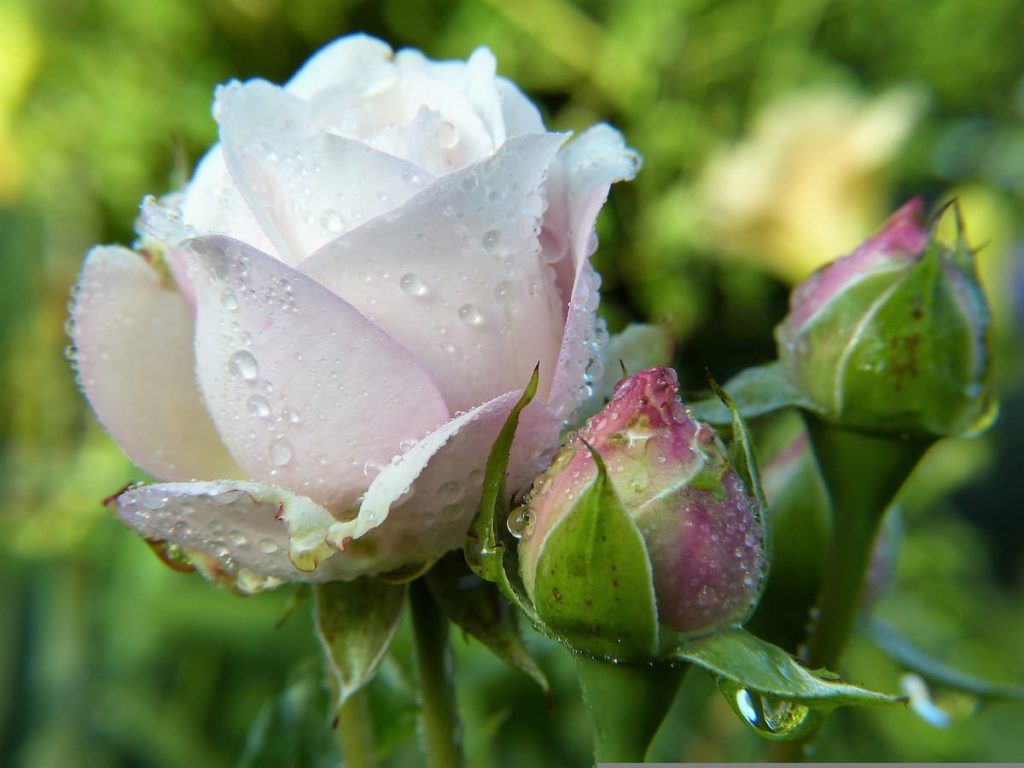
The best month to plant Rose cuttings
- You can take hardwood cuttings from mature stems in winter, and they are the slowest and most difficult to root. Take softwood Rose cuttings in late spring and early summer for best results, choosing pencil-shaped stems only under a faded flower.
- Avoid planting in the middle of winter when the ground is frozen. Containerized and container-grown Roses: Plant all year round.
- You should plant cutting in the spring or the fall (at least six weeks before your average first frost). Planting early enough in the autumn gives the roots plenty of time to establish before the plants become dormant in the winter.
How deep should you plant a Rose?
- One of the most common instructions when planting Roses is always to toss a cup of bone meal at the bottom of the hole. Bone meal contains phosphate, Roses need it, and since it doesn’t travel quickly through the soil, it’s better to put it in a hole.
- You should dig a hole slightly wider but evenly in depth for the Rose root ball. It is usually about 15 to 18 inches deep and 18 to 24 inches wide.
- Dig a planting hole that is wide enough and deep enough to allow the roots to expand. When planted, where the branches start should be just below the surface of the soil. If you plant too deeply, oxygen may be limited, root decline, and even die.
How do you get rid of bugs on Roses naturally?
- Mix 1/2 teaspoon mild dish soap and one teaspoon cooking oil in a 1-quarter sprayer filled with water. Spray freely on the entire plant. The typical concentration of soap is about 2%, which is five tablespoons of soap in 1 gallon of water. Plan to use your soap spray on Roses early in the morning or evening for the best results. This reduces the dehydrating properties of the solution and allows it the most time to work on aphids.
- Mix 1/4 cup alcohol with 1 cup of water to create a rubbing alcohol pest spray. You should spray this solution on insects on infected plants.
Can I plant 2 Roses together?
- To create a continuous hedge effect, you can plant at least 5 to 10 Roses of the same type in a single line. Different Roses can be planted as single plants within the same border. Similarly, single Rose plants can be planted among other companion plants within the mixed border. In both cases, ensure you allow enough space for the mature width of the Rose.
- In general, Roses should be spaced about two-thirds of the expected height. Old garden Roses require more space, but if you’re planting miniature Roses, they can be planted closer to each other. Keeping Roses too close to each other can lead to fungal diseases and other growth problems.
In case you missed it: 18 Common Rose Plant Problems: How to Fix Them, Solutions, and Treatment
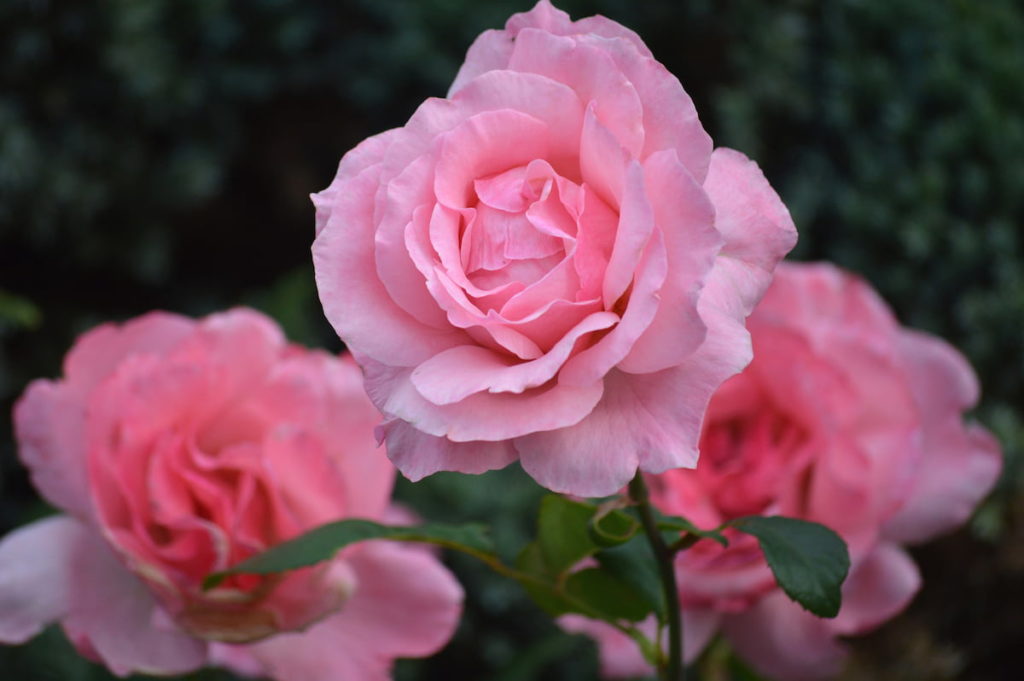
What happens if I don’t prune my Rose plants?
- There are many reasons why it is essential to cut a Rose bush. Failing to cut your Roses can lead to decreased blooms and sick or even dead plants. Since shrubs produce flowers only from new growth, pruning them back will lead to more branches and new growth, increasing the potential quantity of blooms.
- You’ll want to cut them into leaflets with five leaves because these shoots produce flowers. If you cut a leaflet with three leaves, the Rose will continue to grow but will not produce any flowers. As long as you permanently remove the faded flowers, your Rose will continue to bloom throughout the summer. These plants bloom well without spring pruning, but they will respond well to cutting dead, damaged, or diseased wood.
How do you harvest Roses from the garden?
- You should harvest the Rose flowers early in the morning when they are fully hydrated. For the longest vase life, choose flowers in the late bud stage, the outer petals are already open, but the flowers are not fully open. While harvesting, you cut the Rose stem twice. Use quality hand pruners or garden scissors first to cut lower the stem. Make a quick cut, leaving a little more stem than you want. You’ll make a second cut later, so leave the stem an inch long at will.
- The Roses are harvested best soon after they open. Wait until the flowers are fully unfolded to harvest your Roses. You should harvest in spring or summer. In most climates, Roses bloom in late spring or early summer.
Conclusion
Despite their reputation, most Roses are grown and easy to propagate at home. Roses growing from cuttings can start to sound complicated, but follow the above instructions to get more consistent results. You may stick Rose cutting directly into your soil and come back to find it rooted months later. Unlike seeds, which produce very different plants, root cuttings replicas their parents.
- How to Grow Hibiscus from Flower
- Plantation Ideas for Home Decoration: A Beginners Guide
- Flower Garden Designs and Layouts for Beginners
- Planting and Spacing Techniques in Papaya: A Beginner’s Guide
- Growing Gold: Essential Techniques for Planting Pineapples
- How to Make Kalanchoe Plant Bushy: Home Remedies and Solutions
- 11 Reasons Why Your Gardenia is Not Blooming: Home Remedies and Solutions
- Eco Elegance: The Guide to Designing a Drought-Tolerant Landscape
- Gardening on a Slope: Strategies for Hillside Landscaping
- Nourish and Flourish: Top Organic Mulches for Thriving House Plants
- Everything You Want to Know about Indian Mogra Flower: Discover Uses and Growing
- Green Thumb Success: Expert Tips for Cultivating Greenhouse Pumpkins All Year Round
- Maximize Growth & Flavor: The Ultimate Guide to Companion Planting in Herb Gardens
- How to Control Rhododendron Problems Naturally: Home Remedies and Organic Ways to Fix Them
- Natural Magic: The Remarkable Benefits of Cinnamon for Plants
- Best Steps to Revive Dying Tulip with Natural and Organic Treatment
- 10 Reasons Why Your Angel Trumpet is Not Blooming: Remedies and Treatment
- How to Fix Periwinkle Leaf and Flower-Related Problems: Natural Remedies and Solutions
- How to Fix Zinnias Leaf and Flower Problems: Discover Natural and Home Remedies
- Organic Steps to Induce Lemon Tree Flowers: A Comprehensive Guide
- Bloom Booster: Crafting the Perfect Homemade Bougainvillea Fertilizer
- Optimizing Growth: A Guide to Applying NPK Fertilizer for Potted Plants
- 10 Best Homemade Fertilizers for Rubber Plant: DIY Recipes and Application Method
- How to Boost Female Pumpkin Flowers: Effective Steps for More Flowers and High Yields
- Transform Your Indoor Garden: Top Benefits of Pink Salt for Houseplants
- 10 Best Homemade Fertilizers for Peacock Plants (Calathea): Easy DIY Guide
- Unlock Blooms: 9 Reasons Why Your Potted Chrysanthemum is Not Blooming
- 8 Reasons Why Your Potted Hibiscus is Not Blooming: Fix it with Simple Solutions
- Unlock Blooms: 9 Key Reasons Your Potted Frangipani Won’t Flower
- 10 Reasons Why Is My Ice Plant Not Blooming: Remedies and Treatment
- 10 Reasons Why My Potted Hydrangea Not Blooming: Treatment and Remedies
- 10 Reasons Why is My Wisteria Not Blooming: Remedies and Treatment
- 10 Reasons Why is My Goldfish Plant Not Blooming: Remedies and Treatment
- Maximize Your Space: Ultimate Guide to Balcony Gardening with Grow Bags
- 10 Reasons Why Your Iris is Not Blooming: Remedies and Treatment
- 10 Reasons Why Your Anthurium Plant is Not Blooming: Treatment and Remedies